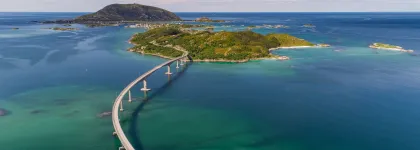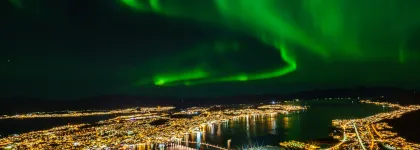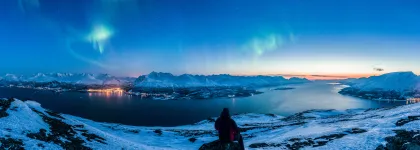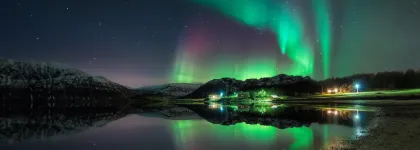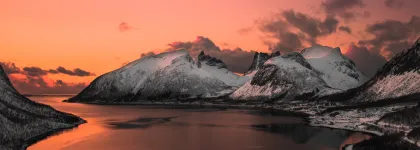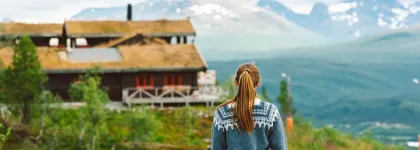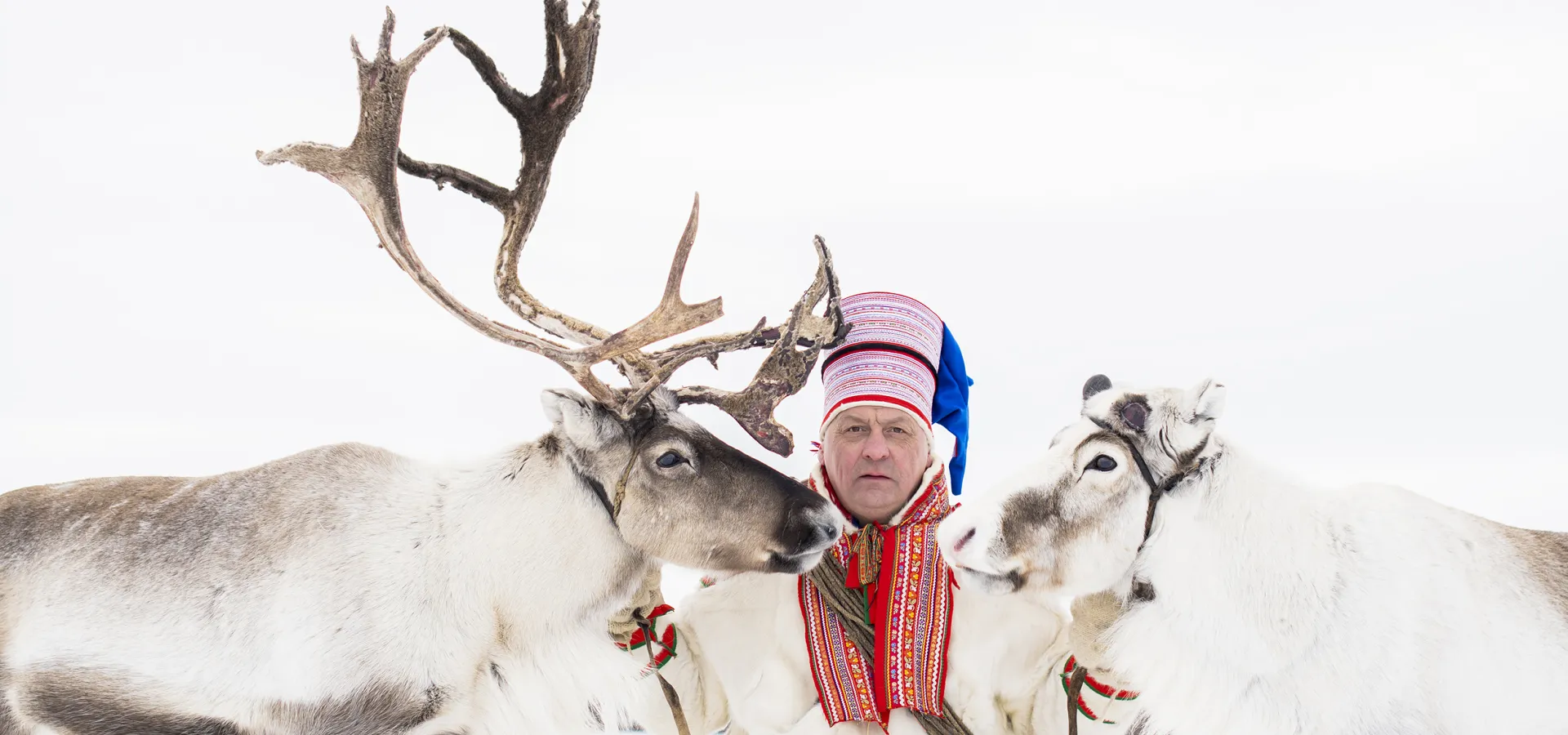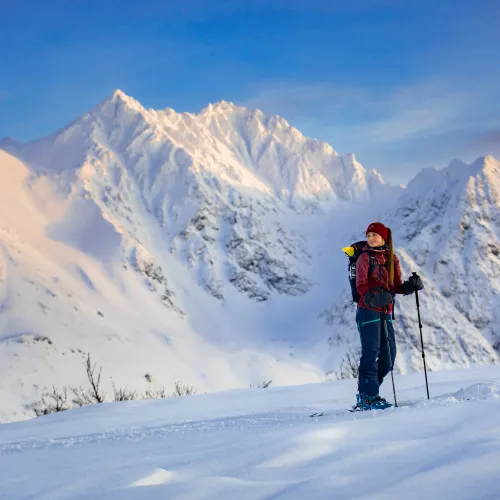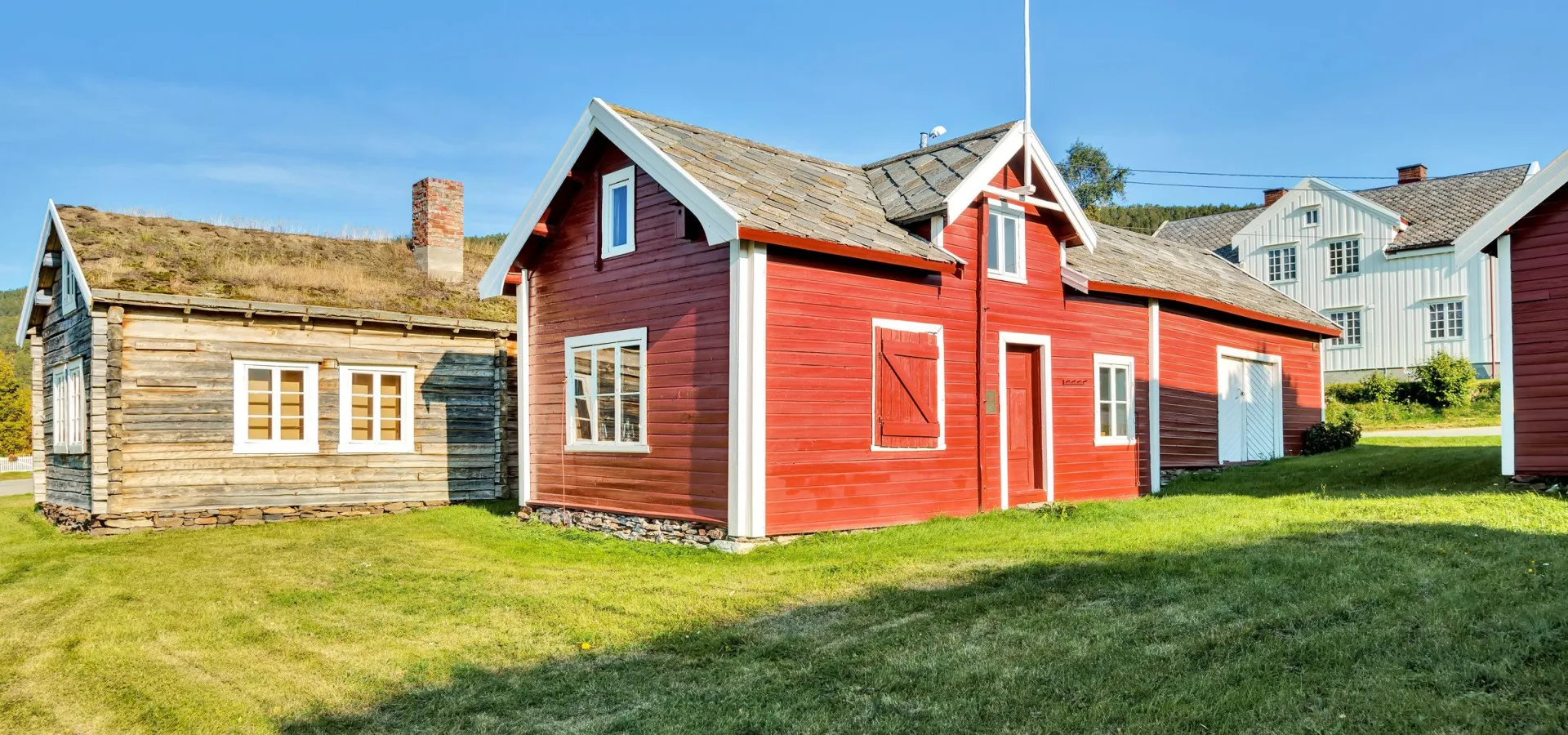Meeting of the Three Tribes
The term "meeting of three tribes" is used to describe the culture around the Lyngenfjord. For centuries, Norwegians, Sami and Kvens have lived and worked side by side. This has had a strong influence on place names, language, traditions and way of life.
Skibotn has been the centre of trade between merchants from all over the North Calotte region for over 200 years.
Skibotn marketplace
In the 1800s, Skibotn Market Square was the most important trading post by the Lyngenfjord and if you visit the place today you can still see two of the original stalls.
Read more about Skibotn Marketplace here.
Nils-Aslak Valkeapää
Nils-Aslak Valkeapää with the stage name Áillohaš was a multi-artist, and is called one of the most influential Sami artists of all time. Valkeapää was both a poet, visual artist musician and yoik composer, indigenous philosopher, organisational person, publisher and inspirer.
Read more about Nils-Aslak Valkeapää here.
A few hundred metres from the centre of Skibotn is Lásságámmi, which is a beautiful residence Nils-Aslak Valkeapää built on the plot he received from Storfjord municipality as a 50th birthday gift in 1993. The house is a 6 angular structure in gamme shape. The house houses many of the artist's works, and on the walls hang his own pictures, both those created by nature itself and those that Nils-Aslak has put together.
Lásságammi is made available as an artist's or researcher's residence for artists or researchers at home and abroad who have a Sami focus or indigenous focus in their work.
Read more about Lásságámmi here.
Storfjord language center
Storfjord Language Centre is Norway's only multilingual language centre, and efforts are being made to strengthen Sami, Kven and Finnish in Storfjord municipality. The Language Centre organises courses and can contribute with translations.
Read more about the Language Centre here.
World’s northernmost three-country cairn
The three-country cairn at Goldajavri in Storfjord marks the border point between Norway, Sweden and Finland. The point is located at 69° north and is 490 meters above sea level.
Read more about Treriksrøysa and find hiking description here.
Bollmanns road
Walking along the Bollmanns/Russeveien road gives you a fantastic view of the Lyngenfjord and in summer it is a perfect place to enjoy the midnight sun! Along the way you get a unique insight into local war history.
In the mountains around the Lyngenfjord, several defensive positions were built during World War II by the Germans who had invaded Norway. Bollmannveien, or Russeveien as it is also called, was part of the "Lyngen line" and was built by prisoners of war. Today, the road is hiking trail where one can learn about one of the war memorials found by the Lyngenfjord.
Find the tour secription here.
Læstadianismen
There is probably no other religious movement that has received the same attention as Laestadianism in modern Northern Norwegian history. In 2000, Lars Levi Læstadius' 200th birthday was celebrated all over the North Calotte. Laestadians, researchers, filmmakers, artists, museum professionals and cultural schools participated in their own way. Why?
Most people in North Troms and elsewhere in Northern Norway associate something with Laestadianism, whether they are Laestadians, have relatives associated with the movement, or they have grown up with it as part of the local community. Most people would agree that it's both good and bad. What is certain is that this people's movement from 1850 until today has left its mark on countless communities and villages. The story of the movement's origin and spread contains somewhat mythical elements.
Read more about læstadianismen here.
Kilde: Nord Troms museum



